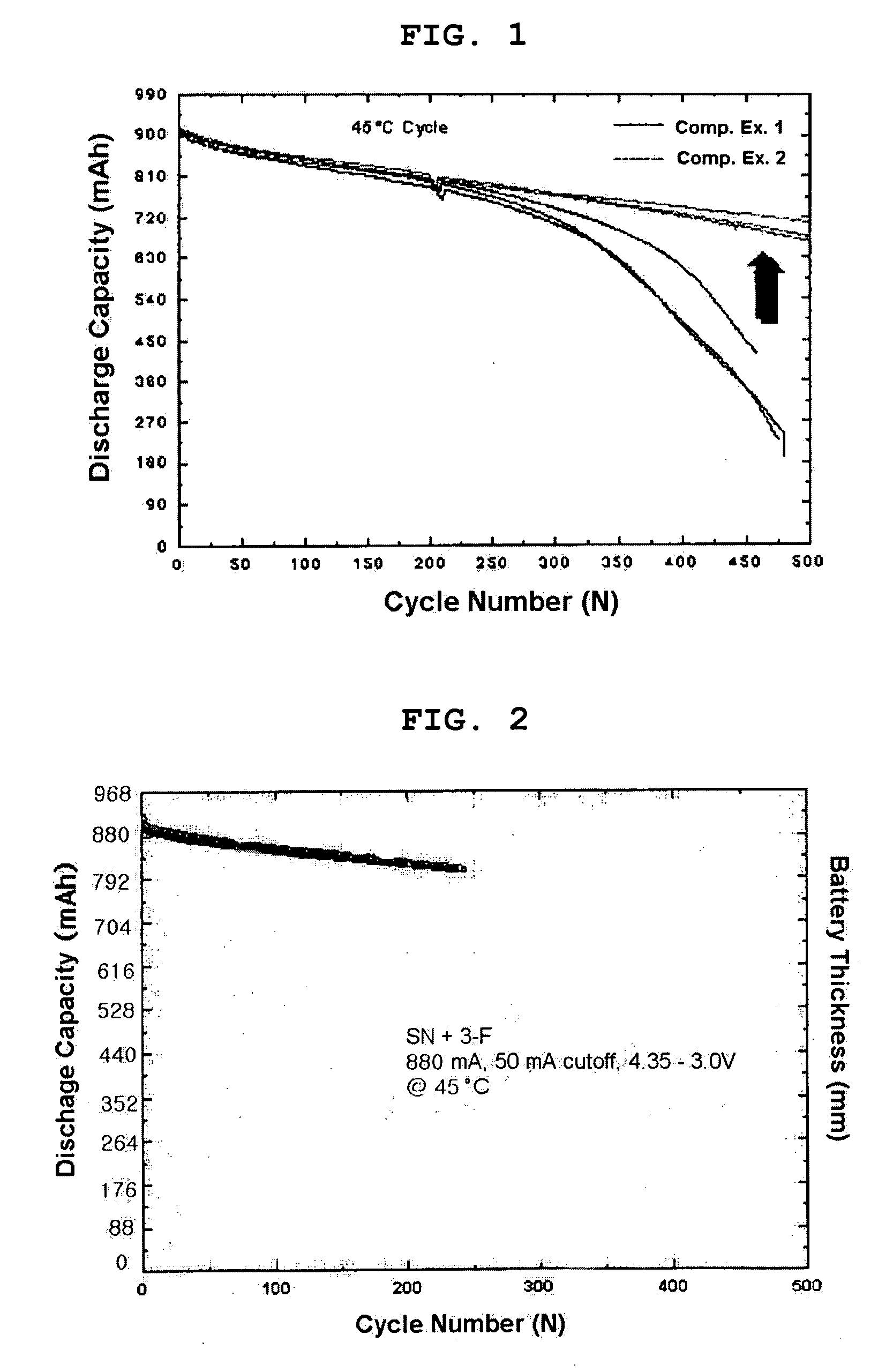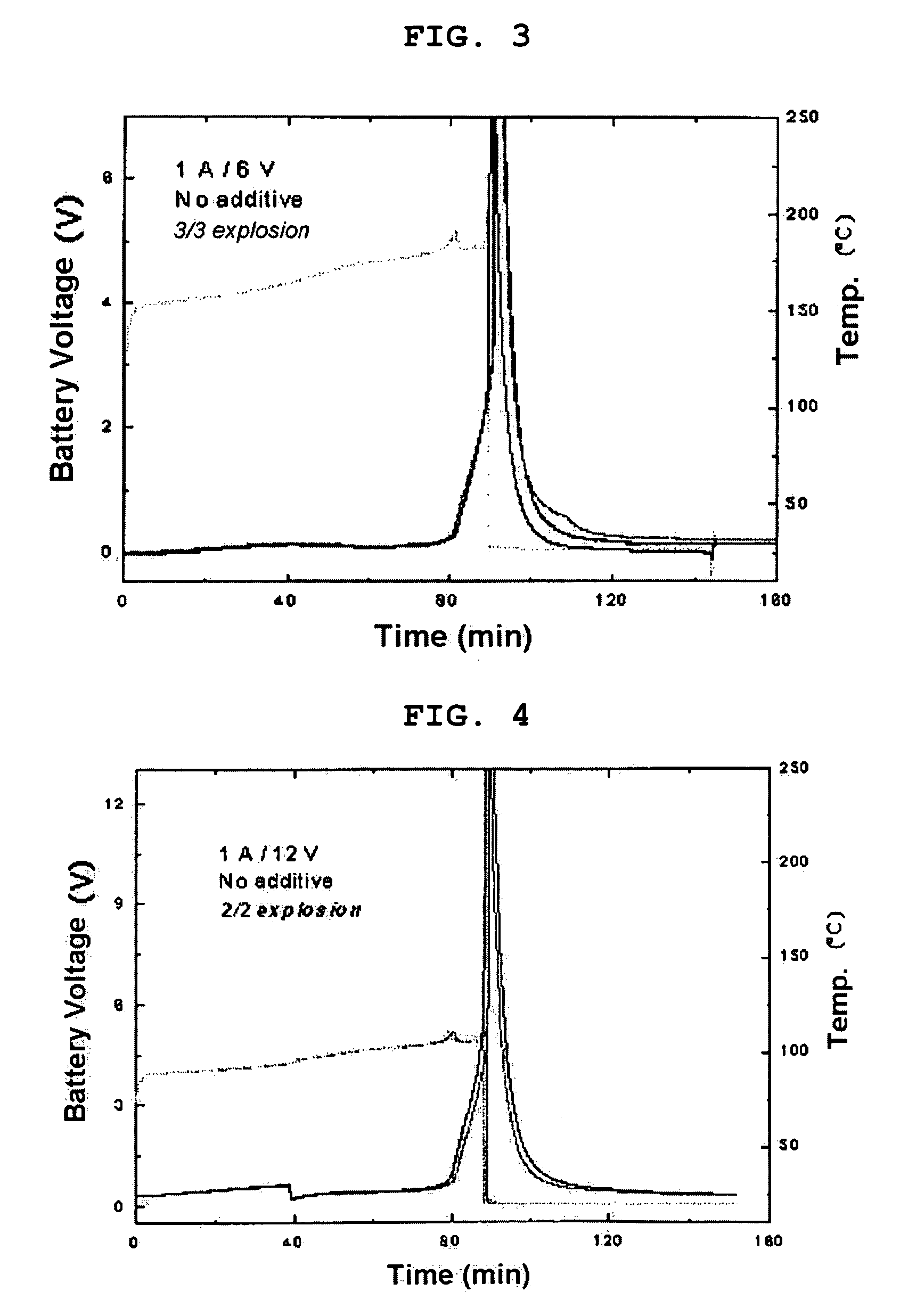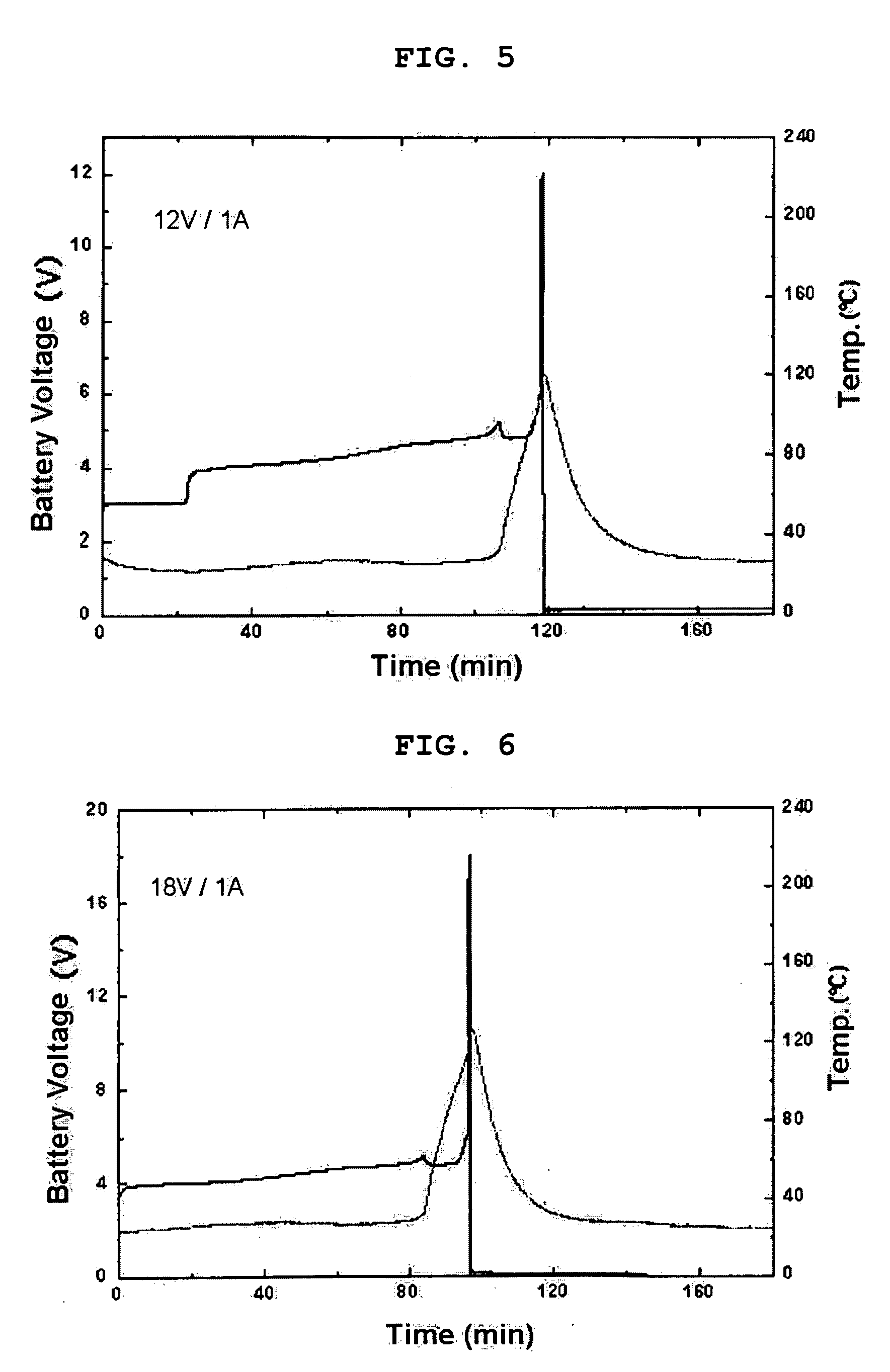Additives for lithium secondary battery
a lithium secondary battery and additive technology, applied in secondary cell servicing/maintenance, non-aqueous electrolyte cells, cell components, etc., can solve the problems of battery swelling phenomenon and significant drop in recovery capacity under high-temperature storage conditions, and achieve the effect of improving thermal stability, poor battery safety, and slow reaction kinetics
- Summary
- Abstract
- Description
- Claims
- Application Information
AI Technical Summary
Benefits of technology
Problems solved by technology
Method used
Image
Examples
example 1
Manufacture of Lithium Secondary Battery Having Charge-Cutoff Voltage of 4.35V
[0066] (Manufacture of Cathode)
[0067] 95 wt % of LiCoO2 having a particle diameter of 10 μm, 2.5 wt % of a conductive agent and 2.5 wt % of a binder were mixed to form slurry. The slurry was applied uniformly on both surfaces of aluminum foil having a thickness of 15 μm, followed by rolling, to provide a cathode having an active material weight of 19.44 mg / cm2. The finished cathode had a thickness of 128 μm.
[0068] (Manufacture of Anode)
[0069] To 95.3 wt % of graphite, 4.0 wt % of a binder and 0.7 wt % of a conductive agent were added and mixed to form slurry. The slurry was applied uniformly on both surfaces of copper foil having a thickness of 10 μm, followed by rolling, to provide an anode having an active material weight of 9.56 mg / cm2. The weight ratio (A / C) of the anode active material to cathode active material per unit area of each electrode was 0.49, and the finished anode had a thickness of 13...
example 2
Manufacture of Lithium Secondary Battery Having Charge-Cutoff Voltage of 4.2V
[0074] Example 1 was repeated to provide a lithium secondary battery, except that a cathode (C) having an active material weight of 19.44 mg / cm2 and an anode having an active material weight of 8.56 mg / cm2 were used to adjust the weight ratio (A / C) of the anode active material to cathode active material per unit area of each electrode to 0.44.
examples 3-10
[0075] Example 1 was repeated to provide lithium secondary batteries, except that nitrile group-containing compounds and fluorotoluene compounds were used as described in the following Table 1.
TABLE 1Nitrile group-containingFluorotoluene compoundscompounds (content)(content)Ex. 3succinonitrile 3 wt %3-fluorotoluene 1 wt %Ex. 4succinonitrile 3 wt %2-fluorotoluene 1 wt %Ex. 5succinonitrile 3 wt %3-fluorotoluene 2 wt %Ex. 6succinonitrile 3 wt %2-fluorotoluene 2 wt %Ex. 7succinonitrile 1 wt %3-fluorotoluene 3 wt %Ex. 8succinonitrile 2 wt %3-fluorotoluene 3 wt %Ex. 9succinonitrile 1 wt %2-fluorotoluene 3 wt %Ex. 10succinonitrile 2 wt %2-fluorotoluene 3 wt %
PUM
| Property | Measurement | Unit |
|---|---|---|
| charge-cutoff voltage | aaaaa | aaaaa |
| charge-cutoff voltage | aaaaa | aaaaa |
| particle diameter | aaaaa | aaaaa |
Abstract
Description
Claims
Application Information
 Login to View More
Login to View More - R&D
- Intellectual Property
- Life Sciences
- Materials
- Tech Scout
- Unparalleled Data Quality
- Higher Quality Content
- 60% Fewer Hallucinations
Browse by: Latest US Patents, China's latest patents, Technical Efficacy Thesaurus, Application Domain, Technology Topic, Popular Technical Reports.
© 2025 PatSnap. All rights reserved.Legal|Privacy policy|Modern Slavery Act Transparency Statement|Sitemap|About US| Contact US: help@patsnap.com



